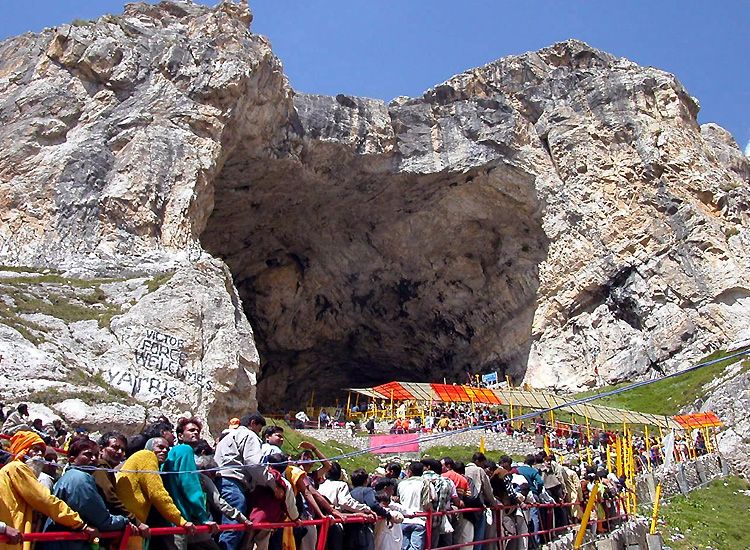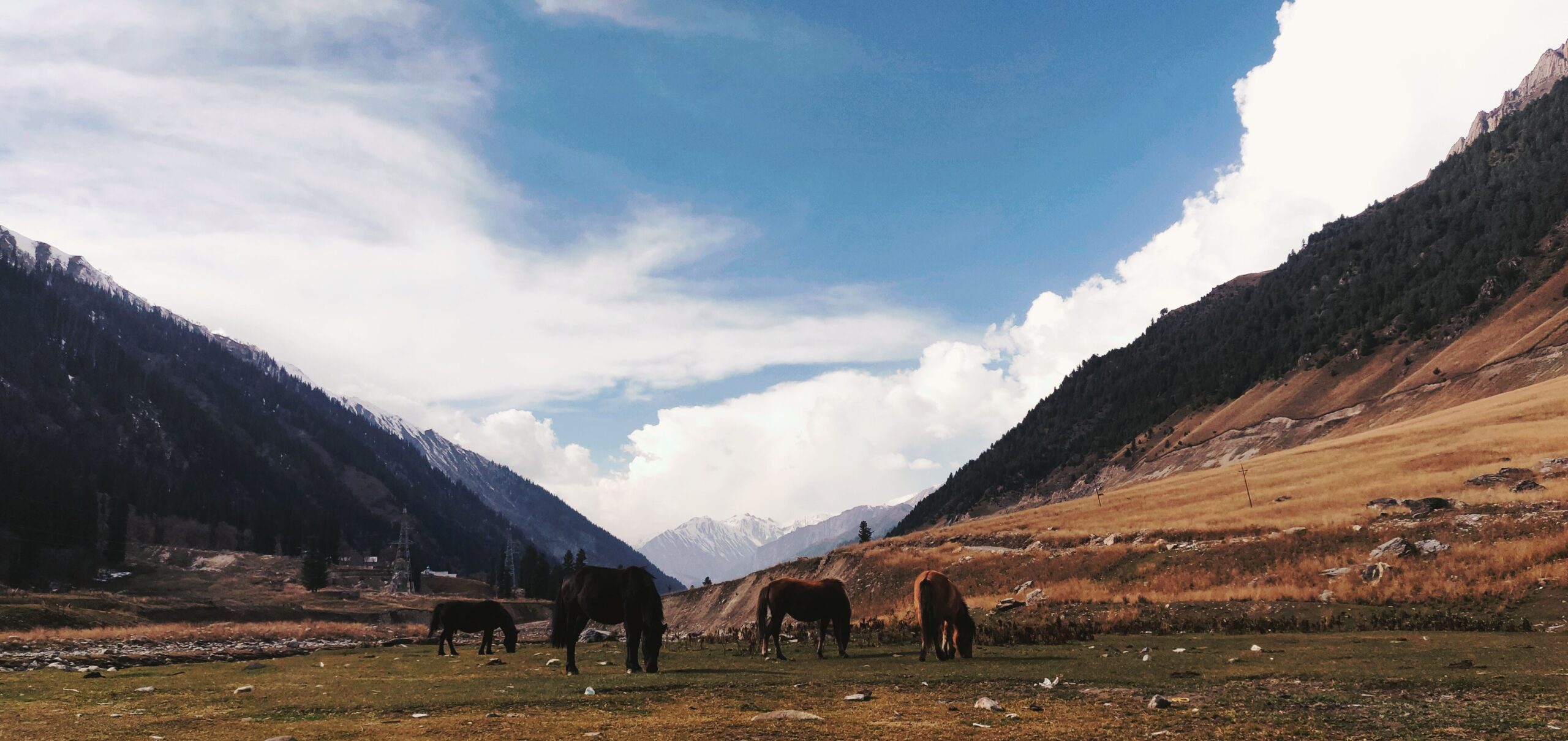
Amarnath Yatra Kashmir
The Significance of the Amarnath Yatra
The Amarnath Yatra holds immense significance in Hinduism. It is believed to be an annual opportunity for devotees to pay homage to Lord Shiva, one of the principal deities in the Hindu pantheon. The cave, which is the focal point of the pilgrimage, is said to contain an ice stalagmite formation that represents Lord Shiva’s Lingam, a sacred symbol of his divine energy.
The significance of the pilgrimage is rooted in Hindu mythology. According to legend, Lord Shiva chose this cave to narrate the secrets of immortality and the creation of the universe to his divine consort, Goddess Parvati. To ensure that their conversation remained private, Lord Shiva left his mount, Nandi the Bull, at Pahalgam, his serpent companion Sheshnag at Sheshnag Lake, and his son Ganesha at Mahagunas Parvat. All of these places are en route to the Amarnath cave and serve as important halts during the pilgrimage.
The Annual Rituals
The Amarnath Yatra typically takes place during the summer months of June to August, with the exact dates varying each year based on the Hindu lunar calendar. The pilgrimage begins with various rituals performed in Pahalgam, including the traditional Pooja and the symbolic departure of the Holy Mace from its resting place in the Dashnami Akhara. The Holy Mace is a symbolic representation of Lord Shiva’s divine powers and is taken on a journey through various towns and villages in the region before reaching the cave.
The pilgrimage officially commences when the first batch of pilgrims leaves Pahalgam and embarks on the challenging trek to Amarnath cave. While the trek is physically demanding, it is also a spiritually enriching experience for the devotees. Pilgrims often chant “Har Har Mahadev,” a mantra dedicated to Lord Shiva, as they make their way through the rugged terrain.
Security Measures and Infrastructure
Due to the challenging terrain and the sheer number of pilgrims, the Amarnath Yatra requires extensive logistical planning and security measures. The government of Jammu and Kashmir, in collaboration with various security agencies, deploys thousands of personnel to ensure the safety of pilgrims. Helicopter services are also available for those who may find it difficult to undertake the strenuous trek.
In recent years, efforts have been made to improve the infrastructure along the trekking route. This includes the construction of better roads, resting huts, medical facilities, and sanitation facilities to accommodate the needs of the pilgrims. Additionally, a robust communication network has been established to provide timely information and assistance to the pilgrims.
The Environmental Impact
The annual pilgrimage to the Amarnath cave has raised concerns about its environmental impact. The fragile Himalayan ecosystem is vulnerable to the large influx of pilgrims and the associated waste generated during the Yatra. Efforts are being made to minimize the environmental footprint of the pilgrimage, including strict waste management practices and regulations to protect the fragile ecology of the region.
Local Economy and Tourism
The Amarnath Yatra is not only a spiritual journey but also an economic lifeline for the region. The pilgrimage contributes significantly to the local economy by generating income for hotels, restaurants, transport services, and small businesses in the area. Many locals are directly or indirectly involved in supporting the Yatra, which provides them with a livelihood during the summer months when the region is accessible.
The journey to the Amarnath cave also presents a unique opportunity for tourists to explore the scenic beauty of Jammu and Kashmir. The lush green meadows, dense pine forests, pristine rivers, and towering mountains provide a breathtaking backdrop to the pilgrimage. Travelers often combine their visit to the Amarnath cave with exploring other attractions in the region, such as Gulmarg, Srinagar, and Sonmarg.
Conclusion
The Amarnath Yatra is a remarkable testament to the enduring faith and devotion of millions of Hindus. It is a journey of both spiritual significance and physical endurance, taking pilgrims through some of the most awe-inspiring landscapes in the world. While it presents logistical challenges and has been mired in controversies, the Yatra continues to draw pilgrims from across India and the world who seek to connect with the divine and experience the natural beauty of the Himalayas.
As the pilgrimage evolves and adapts to changing times, it remains a symbol of the enduring power of faith and the profound connection between humanity and the sacred. The Amarnath Yatra serves as a reminder that even in the face of adversity, people will undertake incredible journeys to express their devotion and seek spiritual fulfillment
All Categories
Recent Posts
Spring in Kashmir – A Guide
A Snowy Paradise Awaits In February! Ski Resort Opens in Gulmarg 2024
Kashmir Finally Receives The First Snowfall of the Season




